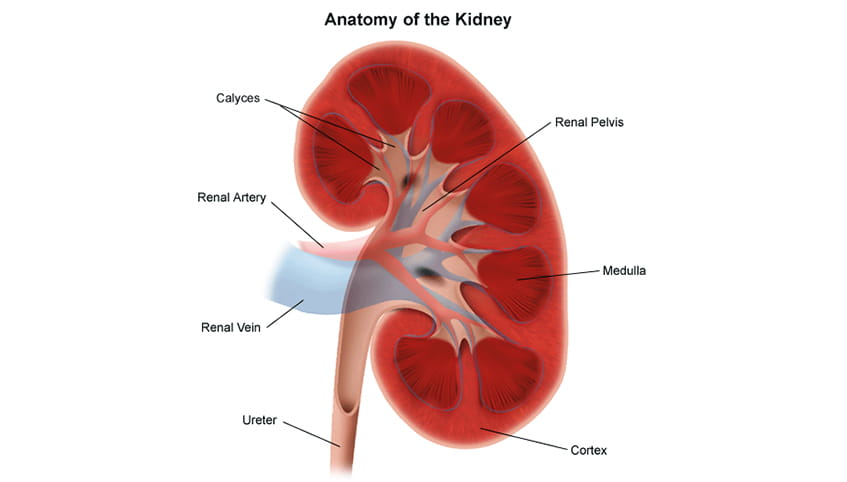Renal Vascular Disease
The University of Kansas Health System offers treatment and prevention plans for those with renal vascular disease, which refers to various problems that affect the blood flow to arteries and veins of the kidneys.
What is renal vascular disease?
Renal artery stenosis (RAS), a form of renal vascular disease, is the narrowing or blockage of one or more arteries that supply blood flow to the kidneys. When your kidneys' blood flow is normal, they filter waste from your body into your urine. Your kidneys also help control your blood pressure by sensing the blood pressure and secreting a hormone, called renin, into your bloodstream.
When your kidneys' blood flow is blocked, your kidneys cannot effectively remove waste from your body. A blockage or narrowing of the arteries can also affect the amount of renin secreted by your kidneys, which helps regulate your blood pressure. Renal vascular disease is often associated with hypertension (high blood pressure). Uncontrolled renal vascular disease can damage the tissues of the kidneys and cause kidney failure and/or high blood pressure.

We offer a variety of appointment types. Learn more or call 913-588-1227 to schedule now.
Renal vascular disease symptoms and risks
Hypertension, or high blood pressure, is the most common symptom. If you have high blood pressure, the first sign you may have renal artery stenosis is your high blood pressure may become worse or the medications you take to control your high blood pressure may not be effective. Renovascular conditions develop slowly and worsen over time. Other signs that you have renal vascular disease include:
- An enlarged kidney that your physician can feel
- Blood in your urine
- Difficulty breathing
- Fever, nausea or vomiting
- High blood pressure
- Pain in the sides of your abdomen, legs or thighs
- Protein in your urine
- Sudden, severe swelling in your leg
The main cause of renal vascular disease is atherosclerosis, which is the buildup of plaque in the artery wall causing narrowing or blockage. Other causes include aneurysms, birth defects, certain medications, injury, infections, inflammation or other underlying diseases, pregnancy, surgery and tumors.
Renal vascular diagnosis and screening
Renal vascular disease often goes undetected and is hard to identify during a normal checkup. It is commonly detected with physical exams, blood and urine tests and medical history, and may include the following tests:
- Angiography
- CT scan
- Doppler ultrasound
- MRA
- Ultrasound
Renal vascular disease treatments
Treatment for renal vascular disease may vary depending on overall health, symptoms, type of disease and preference after discussing options with your healthcare provider. Treatments may include a single or combination approach of the following:

Find a doctor
Doctors at The University of Kansas Health System are care providers and researchers at the forefront of new medical discoveries. From primary care to complex conditions, we offer hundreds of specialists.




